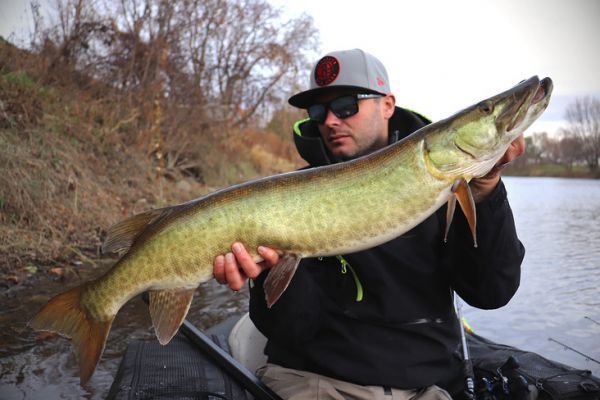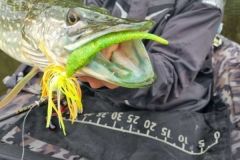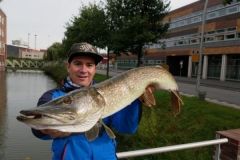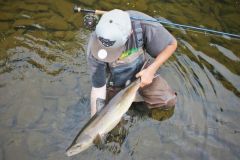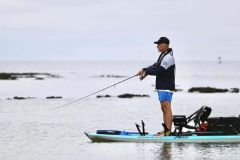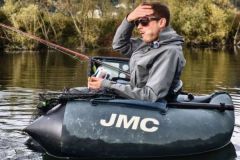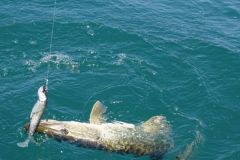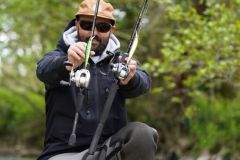The tiger muskellunge
On the portion of the Quebec river chosen for this outing, the population seems to be mostly, if not exclusively, made up of tiger muskellunge, which is in fact a hybrid between muskellunge and pike.
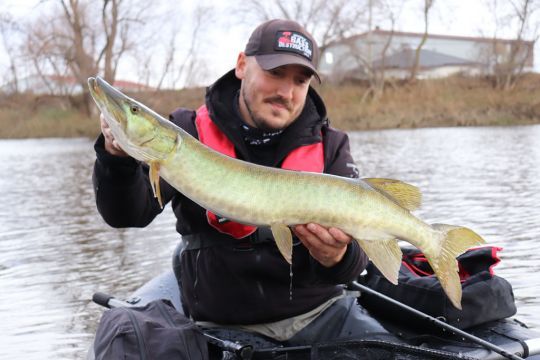
Locating fish
What is quite complicated about this river is that it is similar across its width, with an average depth of 1 to 2.5 meters. Usually, there are some areas of vegetation, which allow to locate a little more precisely where the muskellunge are holding, but the floods that we had throughout the year did not allow this one to flourish.
This monotony makes it difficult to identify the areas where the fish are held, so it is necessary to cast randomly and explore the maximum area to find the fish. In this game, fishermen must be patient and always believe, which is not always easy to do.
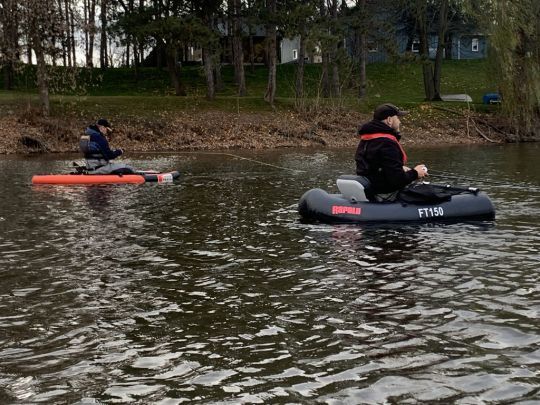
The float-tube, considering the biotope fished, is the perfect boat, because it allows to explore the river discreetly. The strategy is to stay in the center of the river, to fish both banks by alternating and cover the whole area. Alone or with others, this strategy is applicable and allows you to maximize your chances of finding fish.
The glide-bait, my favorite lure for muskellunge!
After having fished with a soft lure for a while, without any touch, I decide to fish with a glide-bait in an area of about 1.5 to 2 meters deep. Even if this lure evolves under 30 centimeters of the surface, I say to myself that considering the low depth, and considering the consequent size of the lure, about twenty centimeters, this should not disturb a fish posed on the bottom, to go up to seek it. My choice of color is fire tiger, on the one hand because the water was tinted, but also because this color, from my experience, does not make the muskellunge indifferent.
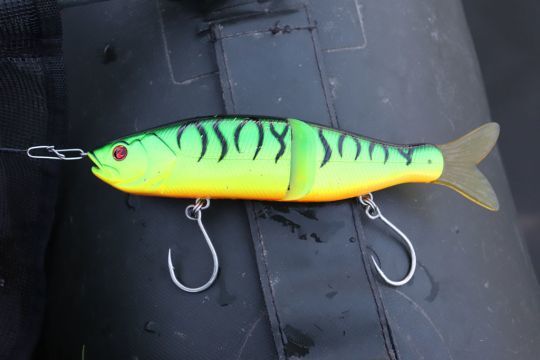
One of the characteristics of the muskie is that it has the annoying tendency to follow the lures without attacking them. My two fish caught this day with this lure, did not depart from this rule.
When fishing for this species, you must be vigilant, watch if a fish follows the lure, hence the importance of wearing polarized glasses.
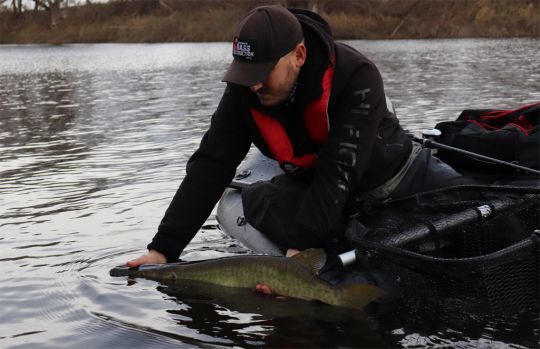
If this is the case, with a glide-bait, as the figure eight technique is difficult to apply with this lure, I give a lot of small strokes to give successive accelerations to the lure, and make it go from right to left quickly. This usually gives good results for triggering the strike.
This technique is of course adaptable on the pike, which at times adopts the same behavior. In this case, it is necessary to take the reflex to accelerate the animation, to trigger a reflex attack of the pike.
